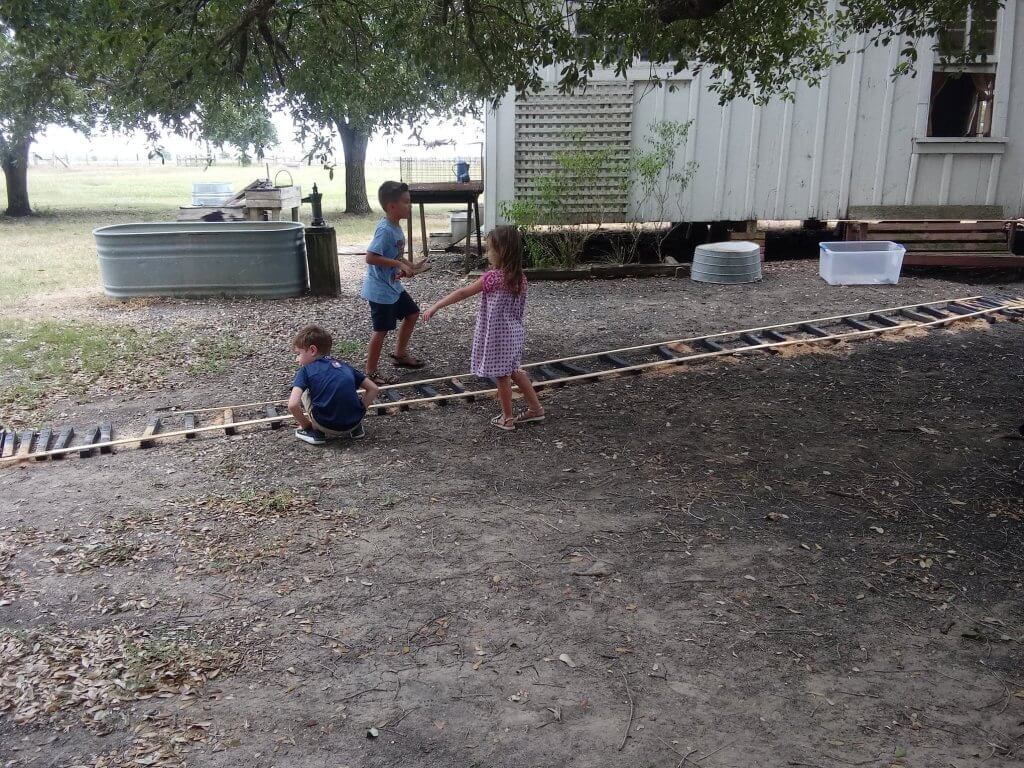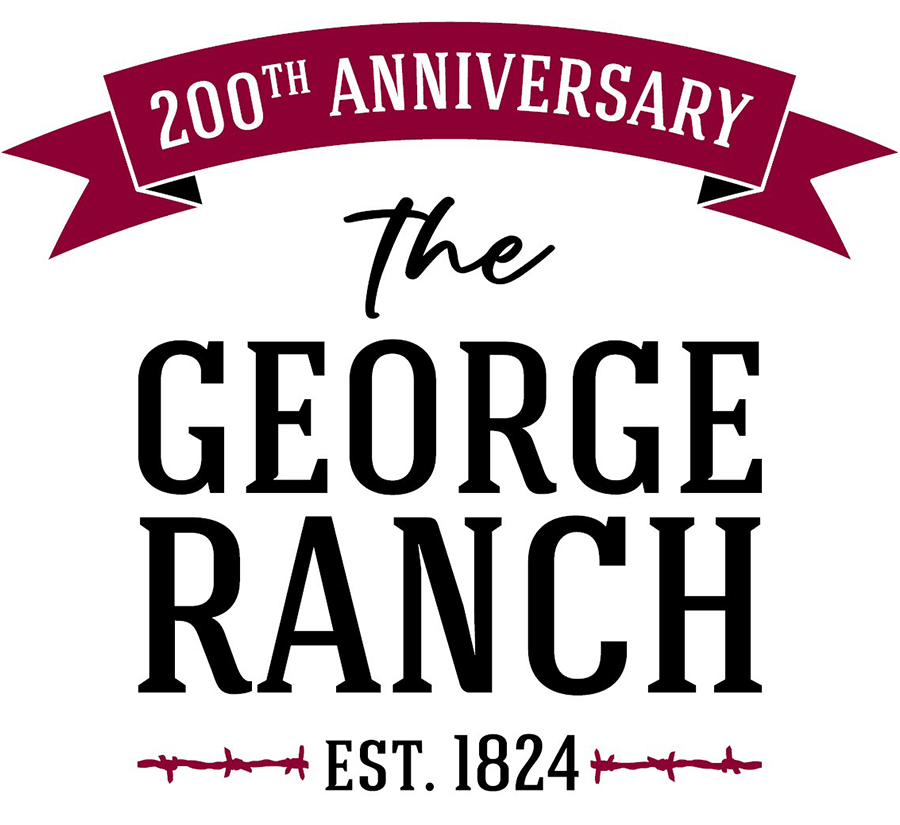Railroad Baron Game
The first steam locomotive was built in 1801 by Richard Trevithick in England. Here in Texas, the first railroad was built starting in 1850 when the Buffalo Bayou, Brazos and Colorado Railway was incorporated. The railroad made it to Stafford in in 1853, and arrived here in Richmond in 1855. Nearby, the Galveston, Colorado, and Santa Fe Railroad was started in 1873, and built the town of Rosenberg in 1880. Finally, in 1881, Italian Count Joseph Telferner started the New York, Texas and Mexican Railroad out of Rosenberg and headed toward Victoria. This rail line followed the current path of Highway 59/69.

Children learning about railroad history and laying track behind Uncle Bob’s 1890s Sharecropper cabin.
Conversation Questions:
- Have you ever seen a train?
- What does a train engine do? (pull the train)
- Train engines are built for two things: speed or power
- What travels on trains at high speed but are not super heavy? (people – passenger trains are built for speed)
- What does a train move that is really heavy but doesn’t need to go fast? (cargo and freight are typically heavy things like rocks and fuel, and they don’t need to be somewhere as fast like people do)
- How is a train different from a car or truck? (Trains can only travel along pre-set tracks, while cars and trucks can travel along any road in any direction. Trains can also carry many more people/much more cargo than a car or truck.)
- Train engines are built for two things: speed or power
Railroad Baron Game Instructions:
- Give each child a map. (Click here to download the map to print at home.)
- Have the children name their train lines at the top of the page.
- Explain that when train lines are built, they are built to connect places together.
- If you are a passenger train line, you connect cities together because people want to travel from city to city.
- If you are a freight train line, you want to connect farms, ranches and mines to bigger cities and markets so that you can sell your goods.
- Most train lines move a combination of people and cargo.
- Everyone starts the game with $1,000 to spend on “tracks”; each square of “track” is worth $100.
- Have them color 10 squares of “track” anywhere they want. Remind them that the goal is to connect places together!
- Talk a bit about why connecting certain places is more profitable than connecting other places:
- The least profitable move is connecting a similar town to similar town; you don’t want to buy things you already have. Cows need to go to market, not to another ranch.
- Fuel is worth more money than vegetables, so mining towns will bring in more money than farm towns.
- Farms have more buildings than ranches, so they need more fuel and stone. It is more profitable to connect a farming town to a mining town rather than a ranching town to a mining town.
- Once the children have finished coloring their first 10 squares/track spaces, use the profit sheet to determine the profits they receive from connecting the different places. (Click here to download the profit sheet to print at home.)
- Using the profits that they made from round one, have each child add more train tracks to his/her map. Remember that each square is $100 – and they can only add tracks if they have enough money!
- Continue the game for a total of five rounds.
- Have the children tell a story with their train maps of what goods they are bringing to which markets and why they connected the places that they did.
- Have fun!



